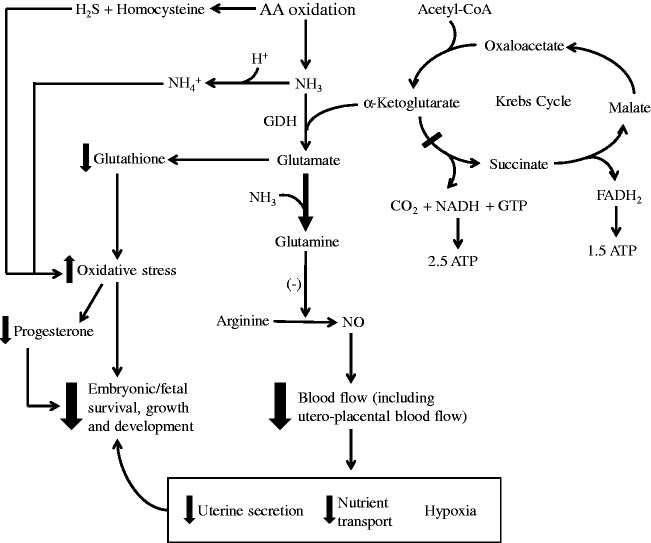Figure 1.
Ammonia toxicity decreases embryonic and fetal survival, growth, and development. Ammonia, H2S, and homocysteine are products from AA oxidation. High levels of ammonia are toxic to the developing embryo/fetus due to (1) oxidative stress resulting from ammonia pulling glutamate away from glutathione synthesis to produce glutamine, which is an inhibitor of nitric oxide (NO) generation from arginine. H2S and homocysteine also contribute to oxidative stress, which reduces progesterone production and release by the ovaries. (2) Ammonia binds a proton to form ammonium ion, which increases intracellular pH. (3) Ammonia draws α-ketoglutarate from the Krebs cycle to form glutamate, therefore inhibiting the Krebs cycle and reducing ATP production. (4) Increased production of glutamine from ammonia inhibits NO production from arginine by endothelial cells, which decreases blood flow (including utero-placental blood flow) and nutrient transport, leading to a decrease in uterine secretion as well as hypoxia in the conceptus. These consequences result in decreased embryonic/fetal survival, growth, and development. GDH: glutamate dehydrogenase.

